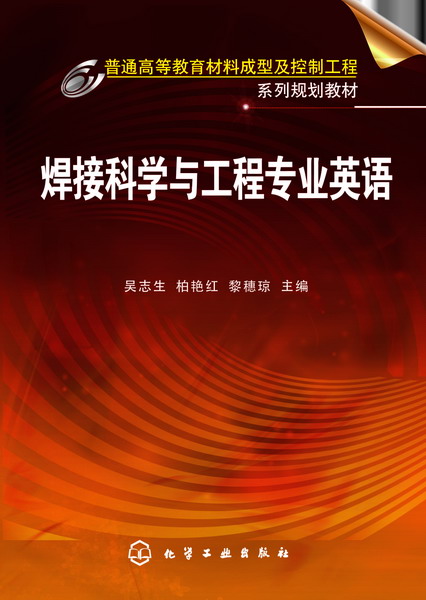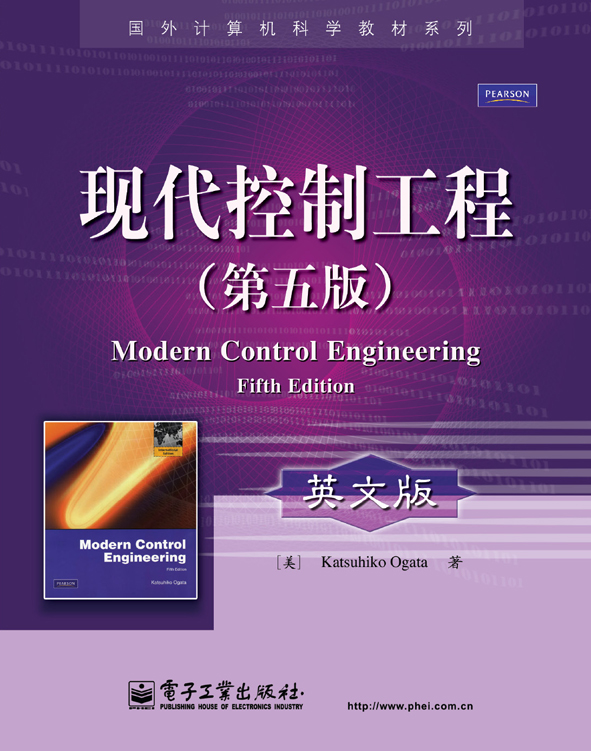- 化学工业出版社
- 9787122062505
- 1版
- 27620
- 60231597-0
- 16开
- 307
- O61
- 化学类
- 本科
作者简介
内容简介
本书针对药学类专业无机化学的双语课程,将无机化学课程的基本内容进行精选,结合国内高校教学实际,删除原版教材中大量的复杂、繁琐及较深奥的部分,力求使之既能体现无机化学课程的专业基础课特色,又可提高学生的英语应用能力。
鉴于医药学专业学生理论与实验课程并重的特点,全书包含两大部分:Ⅰ Inorganic Chemistry与Ⅱ Inorganic Chemical Experiments。Part Ⅰ includings thirteen chapters:1 Introduction,2 Structures of Atoms,3 Chemical bonds,4 Thermochemistry,5 Chemical Kinetics,6 Chemical Equilibrium,7 Solutions,8 Solubility Equilibrium,9 AcidBase Equilibria,10 An Introduction to Electrochemistry,11 Chemistry of Coordination Compounds,12 Nonmetals and Semimetals,13 Metals。Part Ⅱ includings three chapters:1 Basic Techniques of Experimental Chemistry,2 Typical Chemical Laboratory Apparatus,3 Experiments。
本书可作为高等院校本科药学及化学类相关专业的无机化学双语教材,也可作为化学专业英语课的教材或参考书。
鉴于医药学专业学生理论与实验课程并重的特点,全书包含两大部分:Ⅰ Inorganic Chemistry与Ⅱ Inorganic Chemical Experiments。Part Ⅰ includings thirteen chapters:1 Introduction,2 Structures of Atoms,3 Chemical bonds,4 Thermochemistry,5 Chemical Kinetics,6 Chemical Equilibrium,7 Solutions,8 Solubility Equilibrium,9 AcidBase Equilibria,10 An Introduction to Electrochemistry,11 Chemistry of Coordination Compounds,12 Nonmetals and Semimetals,13 Metals。Part Ⅱ includings three chapters:1 Basic Techniques of Experimental Chemistry,2 Typical Chemical Laboratory Apparatus,3 Experiments。
本书可作为高等院校本科药学及化学类相关专业的无机化学双语教材,也可作为化学专业英语课的教材或参考书。
目录
ⅠInorganic Chemistry1
Chapter 1Introduction2
11Observations and Conclusions3
12The Scientific Method3
13Units of Measurement5
14Advice on Studying Chemistry8
Key Words8
Chapter 2Structures of Atoms9
21Particles in Atoms10
22The Bohr Model12
23The Wave Theory of Electrons13
24Heisenbergs Uncertainty Principle14
25The Schrdinger Equation14
26Quantum Numbers15
27Shapes of Atomic Orbitals17
28ManyElectron Atoms19
29Valence Electrons24
210The Periodic Table and Electronic Configurations of Atoms24
211The Periodicity of the Properties of Elements and Atomic Structure26
Key Words30
Exercises31
Chapter 3Chemical bonds33
31Ionic Bonds33
32Covalent Bonds35
33Lewis Dot Symbols and Lewis Structure37
34Sigma and Pi Bonds43
35Bond Polarity44
36Bond Energy, Bond Length and Bond Angle45
37Molecular Geometry47
38The VSEPR Model47
39Hybrid Orbitals51
310Molecular Orbitals56
311Intermolecular Force64
Key Words71
Exercises71
Chapter 4Thermochemistry74
41First Law of Thermodynamics74
42Enthalpy and Enthalpy Change75
43Hesss Law76
44Entropy and the Second Law of Thermodynamics 79
45Spontaneous Processes and Gibbs Free Energy80
46Temperature and Direction of Spontaneous Change81
47Standard Free Energy of Formation and Standard Free Energy of Reaction82
Key Words83
Exercises83
Chapter 5Chemical Kinetics85
51Reaction Rates85
52Theories of Reaction Rates 87
53Effect of Concentration on Rate of Reaction89
54Rate and Temperature92
55Catalysis94
Key Words95
Exercises96
Chapter 6Chemical Equilibrium98
61Concept of Equilibrium98
62Equilibrium Constant98
63Le Chteliers Principle103
Key Words106
Exercises106
Chapter 7Solutions108
71Ways of Expressing Concentration108
72Colligative Properties113
Key Words124
Exercises125
Chapter 8Solubility Equilibrium127
81Saturated Solutions and Solubility127
82Solubility Equilibria127
83Factors Affecting Solubility130
84Predicting Precipitation Reaction132
85Selective Precipitation134
86Application of Precipitate on Medicine137
Key Words138
Exercises139
Chapter 9AcidBase Equilibria141
91Acids and Bases141
92Ion Product of Water143
93Strength of Weak Acids and Bases144
94The pH of Weak Acids and Bases146
95The CommonIon Effect148
96Buffer Solutions150
Key Words153
Exercises153
Chapter 10An Introduction to Electrochemistry155
101OxidationReduction Reactions155
102Balancing OxidationReduction Equations158
103Voltaic Cells161
104Standard Cell Electromotive Force164
105Electrochemistry and Thermodynamics171
106Effect of Concentration on Cell EMF172
107Reduction Potential Diagrams of Elements(Latimer Diagrams)174
Key Words177
Exercises177
Chapter 11Chemistry of Coordination Compounds180
111The History of Coordination Chemistry180
112Formation of Coordination Compound182
113Nomenclature of Coordination Compounds184
114Structure and Isomerism 185
115Coordination Equilibrium in Solution187
116Valence Bond Theory of Coordination Compounds191
117The Crystal Field Theory194
118The Biological Effects of Coordination Compounds199
Key Words200
Exercises201
Chapter 12Nonmetals and Semimetals203
121General Concepts203
122Hydrogen203
123Boron204
124The Group ⅣA Elements,the Carbon Group Elements205
125The GroupⅤA Elements,the Nitrogen Group Elements208
126The Group ⅥA Elements,the Oxygen Group Elements211
127The Group ⅦA Elements,the Halogens215
128The Group ⅧA Elements,the Noble Gases218
Key Words218
Exercises219
Chapter 13Metals 220
131The Group IA Elements220
132The Group ⅡA Elements224
133The Group ⅢA Elements229
134A Survey of Transition Metals232
135Chemistry of Some Transition Metals234
Key Words239
Exercises239
ⅡInorganic Chemical Experiments241
Chapter 1Basic Techniques of Experimental Chemistry242
11Safety242
12Recording Results243
13Weighing243
14Concerning Liquids244
Chapter 2Typical Chemical Laboratory Apparatus 252
Chapter 3Experiments254
31Some Elementary Operation254
32AcidBase Titration256
33Electrolyte Solutions259
34Preparation of Officinal Sodium Chloride and Its Purity Examination 262
35OxidationReduction Reactions267
36Coordination Compounds271
37The Halogens275
38Chromium,Manganese and Iron278
39Copper,Silver,Zinc and Mercury283
310Determination of the Ionization Constant of HAc by pH Meter287
311Preparation of Ammonium Iron(Ⅱ)Sulfate291
312Preparation and Content Determination of Zinc Gluconate294
Appendix296
Reference308
Chapter 1Introduction2
11Observations and Conclusions3
12The Scientific Method3
13Units of Measurement5
14Advice on Studying Chemistry8
Key Words8
Chapter 2Structures of Atoms9
21Particles in Atoms10
22The Bohr Model12
23The Wave Theory of Electrons13
24Heisenbergs Uncertainty Principle14
25The Schrdinger Equation14
26Quantum Numbers15
27Shapes of Atomic Orbitals17
28ManyElectron Atoms19
29Valence Electrons24
210The Periodic Table and Electronic Configurations of Atoms24
211The Periodicity of the Properties of Elements and Atomic Structure26
Key Words30
Exercises31
Chapter 3Chemical bonds33
31Ionic Bonds33
32Covalent Bonds35
33Lewis Dot Symbols and Lewis Structure37
34Sigma and Pi Bonds43
35Bond Polarity44
36Bond Energy, Bond Length and Bond Angle45
37Molecular Geometry47
38The VSEPR Model47
39Hybrid Orbitals51
310Molecular Orbitals56
311Intermolecular Force64
Key Words71
Exercises71
Chapter 4Thermochemistry74
41First Law of Thermodynamics74
42Enthalpy and Enthalpy Change75
43Hesss Law76
44Entropy and the Second Law of Thermodynamics 79
45Spontaneous Processes and Gibbs Free Energy80
46Temperature and Direction of Spontaneous Change81
47Standard Free Energy of Formation and Standard Free Energy of Reaction82
Key Words83
Exercises83
Chapter 5Chemical Kinetics85
51Reaction Rates85
52Theories of Reaction Rates 87
53Effect of Concentration on Rate of Reaction89
54Rate and Temperature92
55Catalysis94
Key Words95
Exercises96
Chapter 6Chemical Equilibrium98
61Concept of Equilibrium98
62Equilibrium Constant98
63Le Chteliers Principle103
Key Words106
Exercises106
Chapter 7Solutions108
71Ways of Expressing Concentration108
72Colligative Properties113
Key Words124
Exercises125
Chapter 8Solubility Equilibrium127
81Saturated Solutions and Solubility127
82Solubility Equilibria127
83Factors Affecting Solubility130
84Predicting Precipitation Reaction132
85Selective Precipitation134
86Application of Precipitate on Medicine137
Key Words138
Exercises139
Chapter 9AcidBase Equilibria141
91Acids and Bases141
92Ion Product of Water143
93Strength of Weak Acids and Bases144
94The pH of Weak Acids and Bases146
95The CommonIon Effect148
96Buffer Solutions150
Key Words153
Exercises153
Chapter 10An Introduction to Electrochemistry155
101OxidationReduction Reactions155
102Balancing OxidationReduction Equations158
103Voltaic Cells161
104Standard Cell Electromotive Force164
105Electrochemistry and Thermodynamics171
106Effect of Concentration on Cell EMF172
107Reduction Potential Diagrams of Elements(Latimer Diagrams)174
Key Words177
Exercises177
Chapter 11Chemistry of Coordination Compounds180
111The History of Coordination Chemistry180
112Formation of Coordination Compound182
113Nomenclature of Coordination Compounds184
114Structure and Isomerism 185
115Coordination Equilibrium in Solution187
116Valence Bond Theory of Coordination Compounds191
117The Crystal Field Theory194
118The Biological Effects of Coordination Compounds199
Key Words200
Exercises201
Chapter 12Nonmetals and Semimetals203
121General Concepts203
122Hydrogen203
123Boron204
124The Group ⅣA Elements,the Carbon Group Elements205
125The GroupⅤA Elements,the Nitrogen Group Elements208
126The Group ⅥA Elements,the Oxygen Group Elements211
127The Group ⅦA Elements,the Halogens215
128The Group ⅧA Elements,the Noble Gases218
Key Words218
Exercises219
Chapter 13Metals 220
131The Group IA Elements220
132The Group ⅡA Elements224
133The Group ⅢA Elements229
134A Survey of Transition Metals232
135Chemistry of Some Transition Metals234
Key Words239
Exercises239
ⅡInorganic Chemical Experiments241
Chapter 1Basic Techniques of Experimental Chemistry242
11Safety242
12Recording Results243
13Weighing243
14Concerning Liquids244
Chapter 2Typical Chemical Laboratory Apparatus 252
Chapter 3Experiments254
31Some Elementary Operation254
32AcidBase Titration256
33Electrolyte Solutions259
34Preparation of Officinal Sodium Chloride and Its Purity Examination 262
35OxidationReduction Reactions267
36Coordination Compounds271
37The Halogens275
38Chromium,Manganese and Iron278
39Copper,Silver,Zinc and Mercury283
310Determination of the Ionization Constant of HAc by pH Meter287
311Preparation of Ammonium Iron(Ⅱ)Sulfate291
312Preparation and Content Determination of Zinc Gluconate294
Appendix296
Reference308








